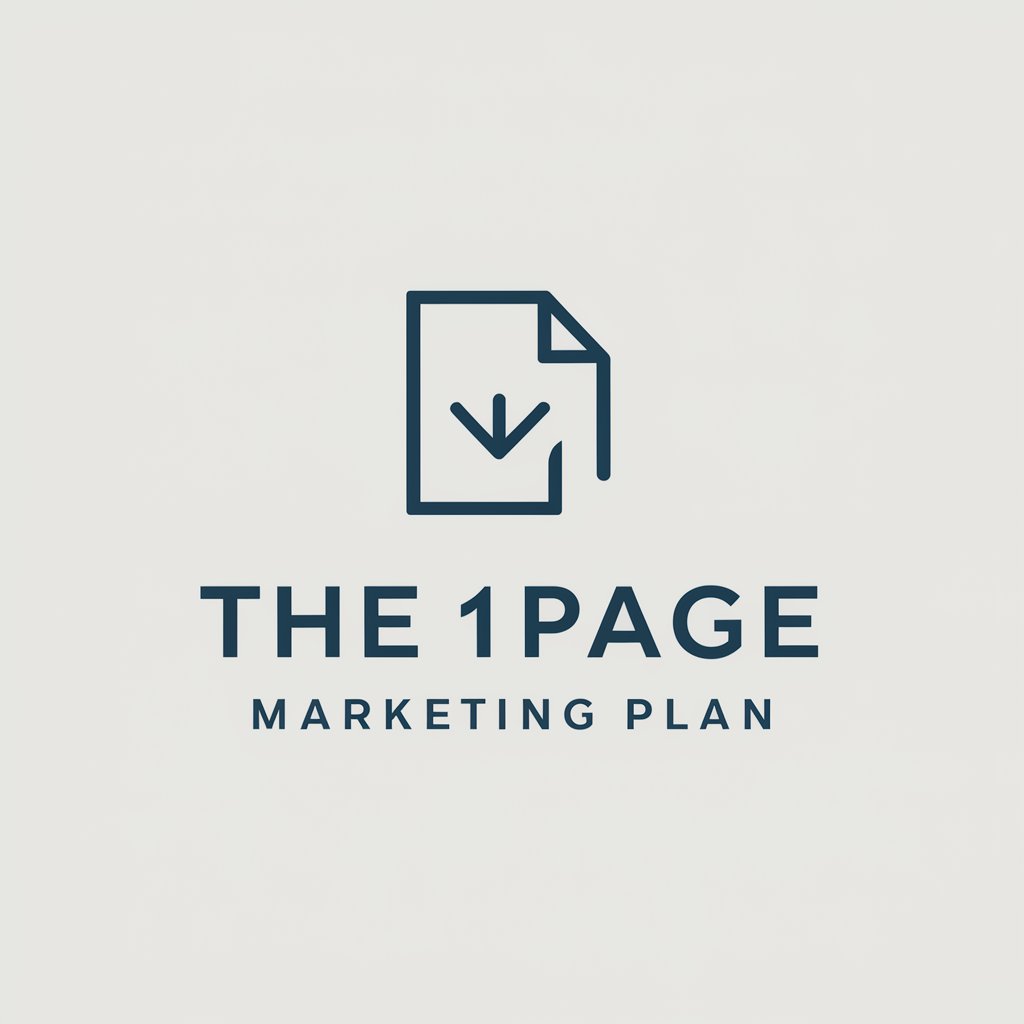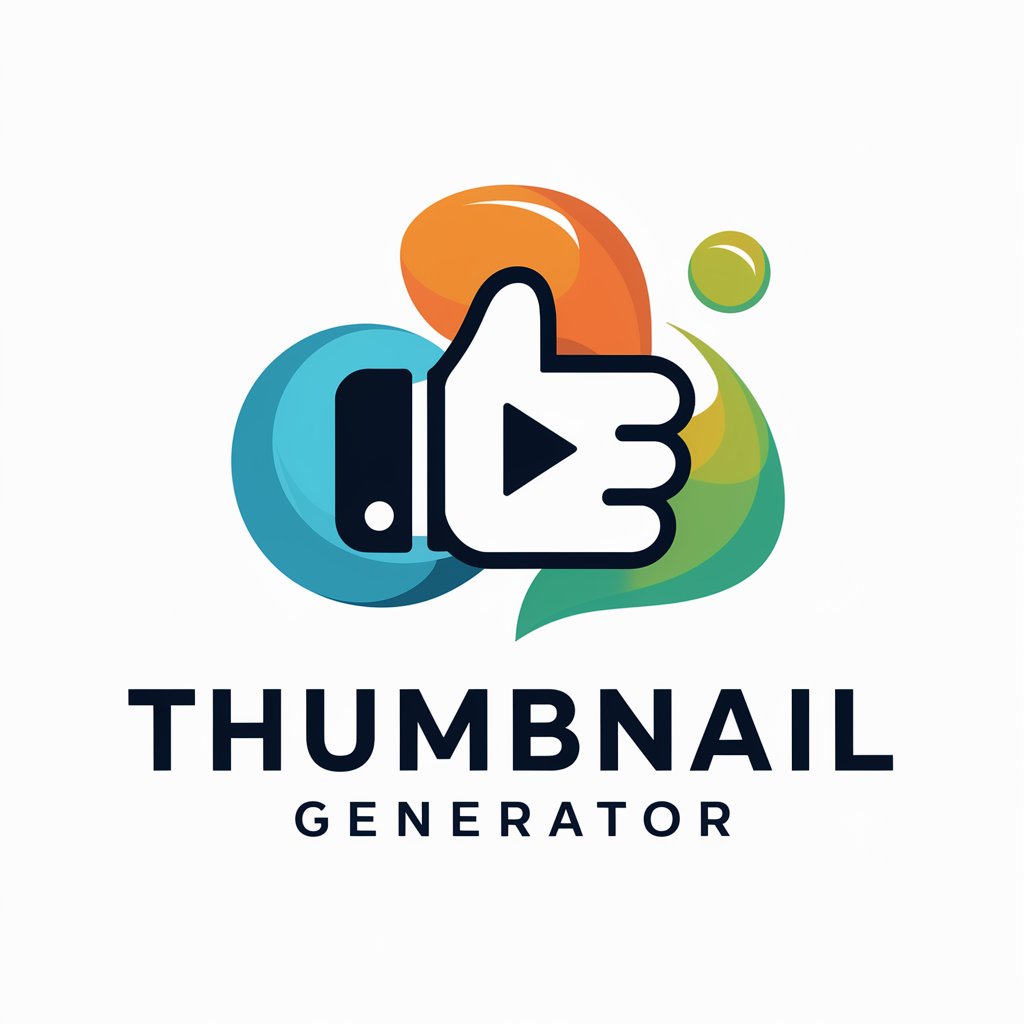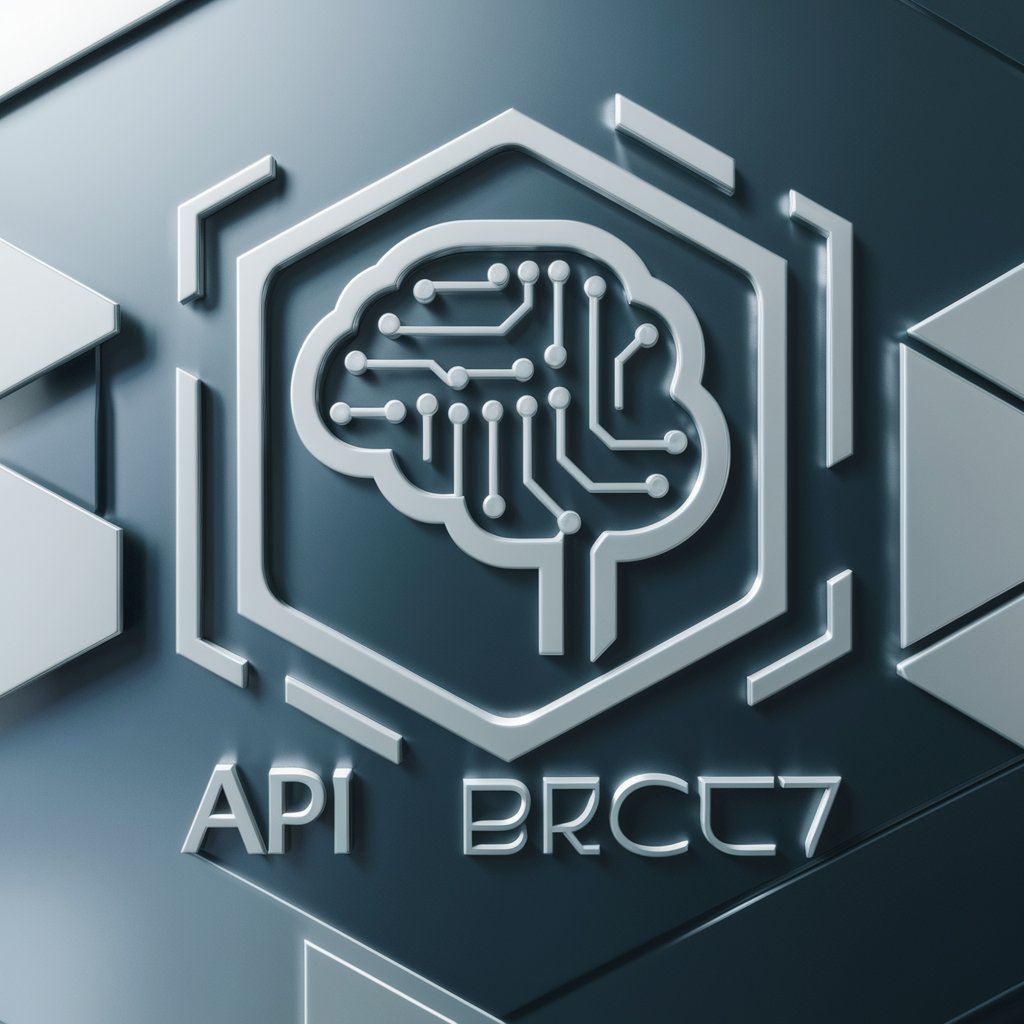The 1-Page Marketing Plan - Simplified Marketing Planning

Welcome! Let's create a powerful marketing plan for your business.
Streamline Your Marketing, Maximize Impact
Generate a marketing plan for a new e-commerce startup focused on eco-friendly products.
Create a marketing strategy for a local bakery looking to expand its customer base.
Develop a one-page marketing plan for a tech company launching a new app.
Outline a marketing plan for a fitness center aiming to increase membership.
Get Embed Code
Overview of The 1-Page Marketing Plan
The 1-Page Marketing Plan is a simplified tool designed to assist businesses in developing a clear and concise marketing strategy on a single page. It breaks down the complex process of marketing planning into a streamlined, easy-to-understand format. The plan is divided into three primary phases: Before, During, and After, each addressing different stages of the customer journey. In the 'Before' phase, the focus is on identifying the target market, crafting a compelling message, and selecting the appropriate media to reach the audience. The 'During' phase involves strategies for capturing leads, nurturing them, and converting these leads into sales. Lastly, the 'After' phase emphasizes delivering exceptional service, increasing customer lifetime value, and stimulating referrals. This structured approach ensures that businesses cover all critical aspects of marketing, from attracting potential customers to turning them into loyal advocates. Powered by ChatGPT-4o。

Key Functions of The 1-Page Marketing Plan
Market Identification and Segmentation
Example
A local bakery uses the plan to identify its target market as health-conscious individuals within a 5-mile radius. It segments the market into sub-groups such as gluten-free and vegan consumers.
Scenario
This function helps businesses focus their marketing efforts on the most relevant audience, avoiding wastage of resources on broad, unfocused marketing campaigns.
Development of Unique Selling Proposition (USP)
Example
An online clothing store develops a USP of 'Eco-friendly, fashionable apparel at affordable prices.'
Scenario
This function aids in differentiating a business from its competitors and making it stand out in a crowded marketplace.
Selection and Optimization of Marketing Channels
Example
A tech startup uses the plan to select social media and influencer marketing as its primary channels to reach young tech enthusiasts.
Scenario
This function involves choosing the most effective channels to communicate with the target market and allocating resources efficiently.
Lead Generation and Nurturing Strategies
Example
A service-based business implements an email marketing campaign to nurture leads by providing valuable information and special offers.
Scenario
This function focuses on acquiring potential customers and building relationships with them to guide them towards making a purchase.
Customer Retention and Loyalty Programs
Example
A retail store introduces a loyalty card that rewards repeat customers with discounts and special privileges.
Scenario
This function emphasizes on retaining existing customers and maximizing their lifetime value through continuous engagement and rewards.
Target User Groups for The 1-Page Marketing Plan
Small and Medium-Sized Enterprises (SMEs)
SMEs often lack the resources for extensive marketing departments. The 1-Page Marketing Plan provides a focused, manageable approach for these businesses to develop and implement an effective marketing strategy.
Startups
Startups require a clear marketing direction to grow their customer base and establish their brand. This tool offers a straightforward framework to help startups navigate the complexities of marketing with limited resources.
Solo Entrepreneurs and Freelancers
Individual entrepreneurs and freelancers can benefit from the simplicity of the plan, which allows them to create a marketing strategy that aligns with their unique business goals without overwhelming them with complexity.
Non-Profit Organizations
Non-profits can use this plan to effectively communicate their cause and engage with potential donors and volunteers, ensuring their messages are targeted and impactful.
Educational Institutions
Educational bodies, such as business schools, can incorporate The 1-Page Marketing Plan in their curriculum to teach students practical marketing planning skills in a concise format.

Using The 1-Page Marketing Plan
1
Visit yeschat.ai for a free trial without login, also no need for ChatGPT Plus.
2
Familiarize yourself with the three key phases of the marketing plan: Before, During, and After, each comprising three stages.
3
Input your business or project details into the tool to tailor the marketing plan to your specific needs.
4
Use the generated plan as a guide for implementing your marketing strategy, focusing on one phase at a time.
5
Regularly revisit and update your plan to reflect changes in your business environment and marketing objectives.
Try other advanced and practical GPTs
The Illustrator
Bringing Ideas to Life with AI Artistry

BABE Wellness
Empowering your wellness journey, AI-enhanced.

写真から逆レシピ
Turn photos into recipes with AI magic.

Emerald Tablet
Empowering Inquiries with AI-Powered Insights

data trip
Empower Your Ideas with AI

Troll Killer
Elevate digital interactions with AI

Zinance
Empowering Your Financial Journey with AI

Film Finder with IMDb Scores and Posters
Discover movies tailored to your taste, powered by AI.

Thumbnail Generator
Craft Click-Worthy Thumbnails with AI

Free Miami Ac Repair Helper Tool
Smart, Seamless AC Repair Assistance

GPT Action Schema Generator
Craft Your Face Swap API Effortlessly with AI

MMT Explorer
Unlock MMT Insights with AI

Frequently Asked Questions about The 1-Page Marketing Plan
What makes The 1-Page Marketing Plan different from traditional marketing plans?
The 1-Page Marketing Plan simplifies the marketing planning process into a single page, focusing on three key phases – Before, During, and After – for clarity and ease of implementation.
How can small businesses benefit from using this tool?
Small businesses can leverage this tool to create focused, actionable marketing strategies without the complexity and resources required for traditional plans.
Is The 1-Page Marketing Plan suitable for online businesses?
Yes, it's highly adaptable for online businesses, as it helps in strategically planning digital marketing efforts across different stages of the customer journey.
Can this tool help in identifying target markets?
Absolutely. The tool guides users in defining and understanding their target market as part of the 'Before' phase, crucial for effective marketing.
How often should the marketing plan be updated?
It's advisable to review and update the plan regularly, at least quarterly, to ensure it remains aligned with business goals and market dynamics.
